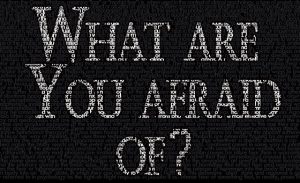There are many things that cause fear and what you can do to overcome it. It is a natural emotion that we all experience at one point or another in life. But there are steps we can take to help us move past it. From facing your fears head-on to understanding what causes them. Here are six ways people have successfully conquered their fears!
Contents
What Is Fear?

Fear is an emotion that is experienced when you are confronted with something that you perceive as a threat. It can cause you to feel anxious, panicked, or even terrified. Fear can be helpful in some situations. Such as when it motivates you to take action to protect yourself from danger. However, fears can also be harmful if it causes you to avoid things that are not actually dangerous. Or if it leads to excessive anxiety or panic.
What Causes You to Experience Fear?
Your fears are often the result of a stressful or dangerous situation. When you feel threatened, your body goes into “fight-or-flight” mode. This can cause you to react quickly without thinking about the best course of action. Common fears are caused by exposure to certain stimuli or situations, such as things you have actually experienced, witnessed, or even imagine. Some common triggers for fear include:
People who are more sensitive to stimuli that cause fear may experience a range of emotions from nervousness to terror. In some cases, the person experiencing extreme fears knows rationally that their reaction is disproportionate to the situation because they can clearly see it isn’t dangerous. However, that knowledge does not ease their fear or stop them from feeling afraid.
Symptoms of Fear

The symptoms may vary depending on the intensity and nature of the situation. Common symptoms can include:
- Some people experience episodes in which they feel extremely afraid without any obvious cause. This is called a panic attack. It may be a one-time event or a recurring problem.
- People with fear typically report feeling less afraid once they remove themselves from the trigger. However, some triggers for fears are not as easy to avoid as others. In these cases, it is important to learn coping strategies that can help you remain calm and rational when confronted with something that makes you feel afraid.
- Learning to recognize when you are experiencing it can help you make decisions that lead to a healthier and more positive life. It’s important to learn to manage fear before it leads to problems in your relationships, work, or other aspects of life.
- Some people experience bouts of intense and excessive fear for no apparent reason. Called panic attacks, these moments can be terrifying and often seem to occur without warning.
People who have been diagnosed with a mental health condition, such as phobias or post-traumatic stress disorder (PTSD), may experience fear more readily than others. In some cases, people experience chronic anxiety related to fears that do not make sense in the context of their life.
Types Of Fears

There are a variety of different types of fears that people can experience. Some of the most common types of fear include:
- Fear of spiders: This is one of the most common phobias, and it is estimated that about half the population experiences some level of fear when confronted with spiders.
- Fear of public speaking: This is one of the most common fears, and it can cause people to feel anxious or terrified when they have to speak in front of a group.
- Fear of death: This is a natural feeling that almost everyone experiences at some point in their life. It can cause people to feel anxious or scared when they think about their own mortality.
- Fear of failure: This is one of the common fears that can cause people to feel nervous when they face situations in which it is possible for them to fail.
- Fear of flying: This is a specific kind of fear of failure caused by exposure to airplane travel. It can be so intense that it prevents some people from traveling via airplane even if their destination requires air travel.
- Fear Of Intimacy: This is a common feeling that often surfaces during the early stages of a relationship. It can cause people to feel nervous and uncomfortable when they interact with their partners in an emotionally intimate manner.
Brain Areas Involved In Fear

The brain is a complex organ that coordinates many functions throughout the body. It’s intertwined with your genetic makeup, environment, and experiences. The parts of your brain that are responsible for feelings of fear include:
- The amygdala plays a significant role in processing fear by helping to identify potentially dangerous situations and coordinating reactions associated with fear.
- The hippocampus is a part of the brain that helps to process emotions and memories. It enables you to recall past events and learn from them in order to avoid making the same mistakes in the future.
- The prefrontal cortex helps us make better decisions by using our learned experiences. For example, if you’ve been bitten by a dog in the past. This part of your brain focuses on that experience in order to make a better decision if you face a similar situation in the future.
- The hypothalamus controls basic functions in the body, such as hunger and sleep. Fear signals from the amygdala activate this region in order to prepare for a fearful event.
If you are confronted with a scary stimulus. Your amygdala signals the rest of your brain that it should be paying close attention to what’s going on around you. It then makes you more aware of subtle details in order to allow you to better detect potential threats. The amygdala also plays an important role in emotional learning and processing, such as helping you identify potentially dangerous situations and learning from previous experiences.
Fearing Fear

Some people experience chronic fear even in the absence of any obvious stimuli that might cause them to feel afraid. For example, they may be afraid of losing control or going crazy if their emotions get too intense. They may also become more fearful and anxious in new situations due to the fear that they might not be able to manage these situations.
Post-traumatic stress disorder (PTSD) is associated with damage to the amygdala. So it may be possible for you to experience some symptoms of PTSD. Even if your amygdala function appears normal on an MRI scan.
When Is Fear a Problem?
Fear is considered a problem when it leads to an inability to function normally in some aspect of your life. Such as social interactions or school or work performance. A fear that causes significant distress and interferes with daily activities, maybe a phobia. Phobias related to specific triggers (such as dogs or heights) are simple phobias. A person with a simple phobia recognizes that their fear is irrational and excessive. But still experiences significant distress in the presence of the trigger.
If your fear causes physical symptoms such as nausea or panic attacks. It may be a specific phobia or social anxiety disorder. When you have any specific or social phobia, you experience intense fear when confronted with the trigger. But it is not out of context with your life. People who suffer from PTSD may also struggle to manage their fear. This is because PTSD can be caused by an extremely stressful event. That was traumatic enough to cause lasting effects on how someone reacts to triggers.
Fears vs Phobias

Fear is an emotion that is typically a response to a dangerous situation. It’s your body’s way of preparing you to either fight or flee from the danger. Fears can be helpful in that it allows you to take action to protect yourself from harm. A phobia is an excessive, irrational fear of a specific object, event, or situation. A person with a phobia will go to great lengths to avoid the trigger of their fears.
The main difference between fears and phobias is that fear is a response to something concrete and real. While a phobia is based on irrational fear. For example, someone with a phobia of spiders may feel an intense fear when confronted with even a picture of a spider. A person who is simply afraid of spiders may acknowledge that they’re uncomfortable with spiders. But will not go out of their way to avoid them or feel panicked in their presence.
Treatment For Fear
If you are struggling with a fear that is impacting your life. There are treatments available to help you manage your fear.
Exposure Therapy
One common treatment is exposure therapy. This involves gradually introducing yourself to whatever triggers your fear. Therapists usually perform this in a controlled setting, such as a therapist’s office. Or in a more gradual way in your everyday life.
CBT
Another common treatment for fear is cognitive-behavioral therapy (CBT). CBT helps you to understand how your thoughts and behaviors contribute to your fear. It also teaches you how to change the way you think and behave in order to manage your fear.
Hypnosis
Hypnosis can also sometimes be used to treat fears. During hypnosis, you enter a state in which your mind is more open to suggestions and changes. This can make it easier for you to learn new ways of thinking and behaving. That will help manage your fear.
Self-help Tools for Fear

There are some self-help tools that can also help you manage your fear. These include:
• Deep breathing: Taking deep breaths and focusing on each breath can help to reduce anxiety associated with your fears.
• Relaxation techniques: Using relaxation techniques such as yoga, meditation, or massage therapy can allow you to focus on other things. This can help you to relax, and also build your tolerance for fear.
• Diaphragmatic breathing: If you’re experiencing a panic attack related to your fear, this is a good technique to use. Lie on the ground with your knees bent and try placing a pillow under your head. So that you don’t have to strain your neck. Place your hand on your stomach, and focus on taking slow breaths from here.
• Reality testing: Ask yourself if the fear you’re experiencing is rational or realistic. People with phobias may find that they can logically answer this question. However, people who experience PTSD related to a traumatic event may have difficulty realizing that their fears are not realistic. By asking yourself this question, you can help to reduce the power of your fears and put it in perspective.
• Coping cards: You can create a card with coping statements that you find helpful. When you’re experiencing a trigger related to your fears (e.g., “I am safe,” “This will pass,” etc.). And keep it with you to look at when you’re struggling.
Medication
If your fear is interfering with your life or causing you significant distress, antidepressants may be helpful. There are different types of antidepressants that work differently in the body to help reduce symptoms of depression and anxiety.
The key to overcoming fears is taking action. Exposure therapy, medication, CBT, and self-help tools can all be helpful in managing your fear. If you’re struggling, it’s important to talk with a professional about your fears. And get the support you need to feel better.
Conclusion
Fear is a natural response that helps us to protect ourselves from danger. However, for some people, it can become overwhelming and impact their daily lives. There are many treatments available for fear, including exposure therapy, CBT, hypnosis, and medication. You can also use self-help tools such as deep breathing and relaxation techniques to help manage your fears. If you’re struggling with it, it’s important to talk with a professional about your fears. And get the support you need to feel better.
A Word From Therapy Mantra
Your mental health — Your psychological, emotional, and social well-being — has an impact on every aspect of your life. Positive mental health essentially allows you to effectively deal with life’s everyday challenges.
At TherapyMantra, we have a team of therapists who provide affordable online therapy to assist you with issues such as depression, anxiety, stress, workplace Issues, addiction, relationship, OCD, LGBTQ, and PTSD. You can book a free therapy or download our free Android or iOS app.


